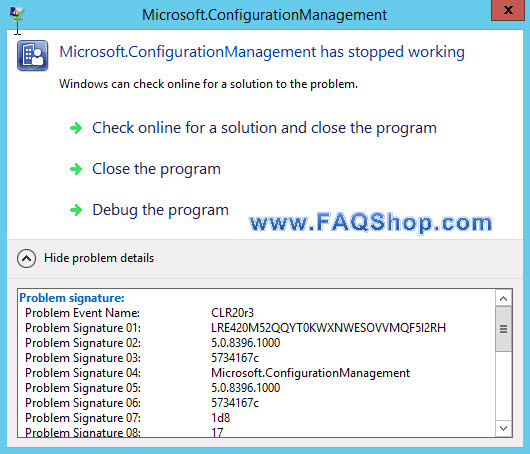Microsoft.configurationmanagement Has Stopped Working

Jan 27, 2013 When I run Configuration Manager Console in local or admin account, it keep 'stopped working'. I un-install it and re install it through our company. Dec 31, 2013 Please advise: Version: SCCM 2012 SP1 CU2. The configuration manager console crashes randomly with following error: Microsoft Configuration Management has. When I try to load the ConfigMgr Service Pack 1 (SP1), Console I see the following error: Microsoft.ConfigurationManagement has stopped working. Jan 16, 2013 Unhandled exception when launching the System Center 2012 Configuration Manager SP1 Console. Microsoft.ConfigurationManagement has stopped working.
How To Install Neat Software Without Cd. Attention, Internet Explorer User Announcement: Jive has discontinued support for Internet Explorer 7 and below. In order to provide the best platform for continued innovation, Jive no longer supports Internet Explorer 7. Jive will not function with this version of Internet Explorer. Please consider upgrading to a more recent version of Internet Explorer, or trying another browser such as Firefox, Safari, or Google Chrome.
(Please remember to honor your company's IT policies before installing new software!) • • • •. Battlefield Hardline Highly Compressed Game here.
The following information is included in the Application class: • Administrator properties used by the Configuration Manager administrator to identify and categorize the application in the Configuration Manager Administrator Console. • Localized information and metadata shown to the end-user in the Software Center and the Application Catalog. • List of the deployment types that belong to this application. • The package properties. The application is the smallest deployment unit in Configuration Manager. Each application can contain one or more deployment types. However, only one deployment type can be applied to a client.The deployment type that is applied to the client depends on the following: • The priority of the deployment type.
Higher priority deployment types are installed over lower priority deployment types. • Host technology requirements of the deployment type.
Deployment types that meet the host technology requirements are installed over deployment types that do not meet the host technology requirements. • The actual requirements of the specific deployment types. Only deployment types that meet the requirements can be applied to the client. The highest priority deployment type which meets all the requirements will be installed.